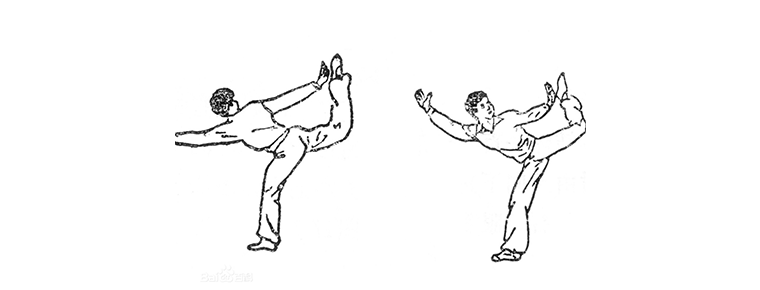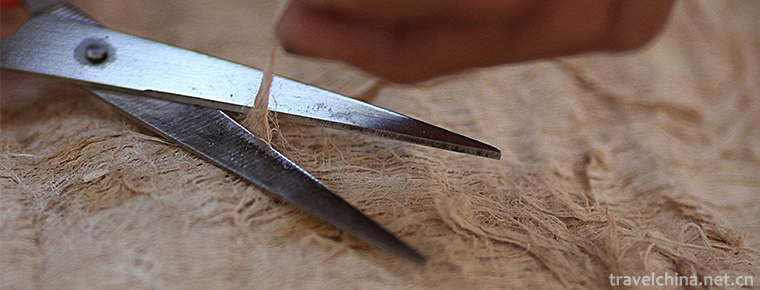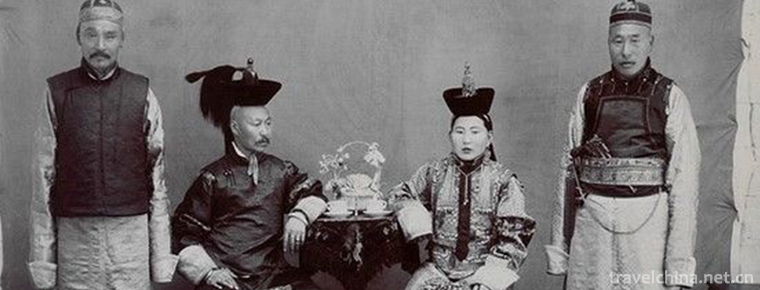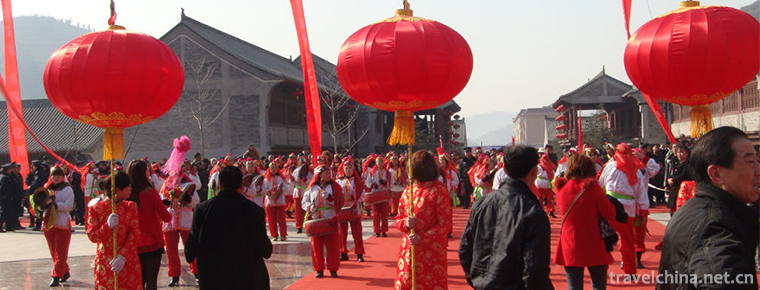Wharf song
Wharf song
The dock number is a traditional folk song in Shanghai. Singing in docks, cargo yards, loading and unloading, lifting, push and pull and other labor occasions. The main singing methods of wharf number are "collar and closure", that is, one person leads, all people gather, or all people lead and all people gather. In the slower pace of labor, the "collar" sentence is longer and the "combination" sentence is shorter. In the tense labor, the "collar" and "he" sentences are very short.
In June 2008, the dock numbers declared by Shanghai Pudong New Area and Yangpu District were listed in the second batch of national intangible cultural heritage lists with the approval of the State Council.
historical origin
In history, "wharf number" has been repeatedly shown publicly. In 1934, Nie Er went to the wharf to experience life, and created the stage play "Yangtze River Storm", in which he composed "The Workman's Song of the Wharf" with "Wharf Number". In 1961, a "Wharf Number" performance was held in the whole port area of Shanghai. According to the newspaper records at that time, the performance presented 19 schools, 108 numbers, and the scene was warm. Later, the Shanghai Port Art and Works Troupe held a nationwide tour and participated in it. In 1986, the British Panshi Film Company sent a special production team to Shanghai to shoot special films with the content of "wharf number" in various ports.
artistic characteristics
It is an artistic labor command order to command people's unified steps and coordinate their actions. Its rhythm and labor rhythm are fully in line, and it is the closest relationship among all folk songs and productive labor practice. The singers are all male, combining "collar" with "harmony", with a wide, loud and multi-treble voice area, which shows the beauty of masculinity.
"41 kilometers long along the Huangpu River, docks stand. Before liberation, people from all over the country came to work here. After liberation, countless wharf workers across the Straits worked here from the first district of Shanggang to the seventh district of Shanggang. Although most of the "wharf number" born in labor are function words such as "say hello" and "hey hello", the music style is distinct and the types are very rich. Reporters learned from the second batch of national intangible cultural heritage recommendation lists that labor codes are divided into dock codes, ocean codes, River codes, forest codes, transport codes and so on. The wharf workers in Shanghai come from all directions. Their demographic structure can be described as "Five Places, Hainabaichuan". Among them are Bengang, Northern Jiangsu Band, Hubei Band and Ningbo Band. At that time, there was a saying that "if you want to enter the wharf, you must know the number first". Therefore, the number of Shanghai Port Wharf not only contains the intonation and rhythm of dialects, but also has the traditional folk singing tune of different places. It is distinct from other chants and has the typical characteristics of Shanghai style. According to the different ways of labor, "Shanghai Port Wharf Number" has also been subdivided into "shoulder-mounted Number", "Bar Number" and "stacking Number", which are quite rich in style.
With the improvement of mechanization and working environment, great changes have taken place in the way of labor carried by hand in the past, and the "wharf number" has gradually lost its existing soil. Today's young people, perhaps only from the old movies in their early years to hear the more exciting "wharf number". Nevertheless, there are still a group of surviving retired dockers who often hum. Tangqiao community has a 60-year-old Mr. Han, who was a trade union cadre in the harbour area. He has recorded and adapted many "wharf numbers". After retirement, he often sings in the old wharf workers organized by the community. They won the prize in the "Chinese Native Folk Song Contest". Relevant organizations also invited 80-year-old retired worker Mr. Cheng from northern Jiangsu to record and collect. Nevertheless, "wharf number" now belongs to the category of "preservation". Hou Xiaosheng believes that "wharf number" is a characteristic element of Shanghai music, but it is very difficult for us to hear this kind of music in film, television, songs and stage works reflecting Shanghai culture. If the dock number is often used in various literary and artistic works, the chances of being known and understood will certainly be much more than being preserved.
Inheritance status
There are many types of wharf number because of different handling objects and environment. The singing of wharf number also forms a unique wharf number with local characteristics and styles due to the different pronunciation of local dialects. Among them, "North Jiangsu Number" and "Hubei Number" are the most representative and popular. The way of inheritance is a kind of "labor inheritance" of natural inheritance.
Nowadays, "wharf number" does not seem to be taken seriously. Hou Xiaosheng has participated in the excavation and collation of "wharf number" for many years. Although nearly 100 "wharf number of Shanghai Port" have been included in "Shanghai Folk Song Integration" by him and his colleagues, he believes: "If all sectors of society can realize the importance of protecting intangible cultural heritage, more tracks should be found." Through his introduction, the reporter learned that some enterprises did not realize the importance of protecting and preserving intangible cultural heritage and were unwilling to provide the archives retained by their predecessors; some departments along the Yangtze River did not support the research of experts and relevant institutions, which made it difficult to find many information and characters about "wharf number". For this reason, some experts pointed out that intangible cultural heritage is a valuable treasure. We should recognize its importance and actively cooperate with the work of excavation, collation and protection so that it will not be obliterated by the changes of the times.

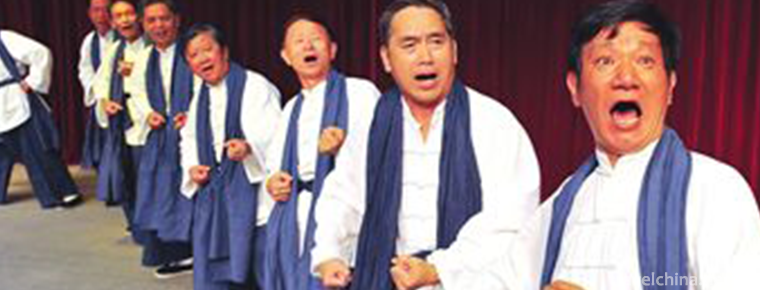
-
Ruoergai CountyZoige County
Zoige County is located in the northeastern edge of the Qinghai-Tibet Plateau.
Views: 161 Time 2018-10-12 -
Qinhuangdao Shanhaiguan Scenic Area
Shanhaiguan, also known as Yuguan, Yuguan and Linluguan, is located 15 kilometers northeast of Qinhuangdao City, Hebei Province.
Views: 164 Time 2018-11-24 -
Wuyuezhai Scenic Area
Wuyuezhai Scenic Area, National Forest Park, AAAAAA Tourist Area, is located in the eastern foot of Taihang Mountain, located in the northwest of Lingshou County, Hebei Province.
Views: 165 Time 2018-12-22 -
Yaoshi Scenic Spot
The Youshi Scenic Spot is located on the South Bank of Youshi Hainan, Haojiang District, Shantou City, across the sea from Jinping District. It is the first provincial-level scenic spots in Guangdong .
Views: 734 Time 2019-02-07 -
Tianma Island Tourist Area
Shandong Tianma Island Tourist Area is composed of Ma Qi Mountain and Tianhu Lake. It is located 16 kilometers northeast of Junnan County Town, Linyi City..
Views: 340 Time 2019-02-21 -
Poke feet
Poking feet is one of Chinese boxing. Leg and foot kungfu is the main form. It is said that it originated in the Song Dynasty and flourished in the Ming and Qing Dynasties.
Views: 109 Time 2019-04-22 -
Production Techniques of Bark Cloth of Li Nationality
Li bark cloth production technology is based on the bark of plants as raw materials, after beating technology to produce cloth technology..
Views: 90 Time 2019-05-12 -
Lishui drum words
Lishui Drum Ci is a popular rap art in Liandu and its surrounding areas in Lishui City, Zhejiang Province. Lishui Drum Ci originated from the Tang Dynasty. During the reign of Emperor Li Shimin, it wa.
Views: 335 Time 2019-05-13 -
Tauk Taohu
Tao Ketaohu (May 13, 1864-April 1922), also translated as "Tao Ketao", Fuer Zhijin, Mongolian, the former Banner of Guoerros in Zhelimu League, Mongolian subordinate aristocrat of Nezhazazak.
Views: 97 Time 2019-06-18 -
Shaoxing opera
Vietnam Opera is the second largest opera in China, known as the second national opera, also known as the "most widely circulated local opera". Some people think that it is the "largest.
Views: 132 Time 2019-07-16 -
Neutralization Festival
Zhonghe Festival, a traditional Chinese folk festival, is on the second day of February, but the date at that time was on the first day of February. With the evolution of history, it was changed to th.
Views: 379 Time 2019-08-03 -
And then I met him 66 Hu Tik Tok Songs 2020 Hot Songs
Hey, do you still think of me Like I cry sometimes at night I was so happy that I thought you were the end To give you everything Time is always disobedient and starts to play dumb.
Views: 487 Time 2020-05-21





